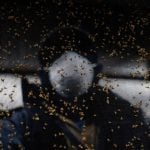Late autumn is when many spring calves are weaned and removed from their moms.
The remaining cow herd is now in its earliest weeks of gestation and requires a modest level of nutrition. It is an opportunity to feed some of the most cost-effective forage diets. But as time goes on, beef cows’ nutrient requirements steadily increase, and new enhanced diets are required.
Unfortunately, some producers do not follow suit, which often leads into a poor calving season. To avoid such catastrophe, a nutritious early-gestation diet should be established for the cow herd that can be built up as winter and their greater nutrient demands descend upon them.
Read Also

Gentle treatments for pain in the neck
Heading toward year-end, people unknowingly tense up against the cold and busyness, causing neck pain that can often be treated with appropriate support and gentle mobility, athletic therapist Kathlyn Hossack says.
Even before we get started on setting up any gestating cow feeding programs, most producers should walk through their herds, whether on pasture or at home, and think about which cows should be culled. There might be many reasons that beef cows are to be culled; the top qualification on most peoples’ list should be open cows.
I recently spoke to a lifetime producer and friend, who operates a 400-Angus/Simmental cow herd. He allows no exceptions to this rule. He figures that if an open cow (that is, not pregnant) is not sold, not one dime will be generated until the fall of 2025, even if she gets rebred by next spring. And she is already an $800 liability when she is overwintered. Besides, with the strong cull prices at the saleyard, it only makes common sense to put $2,500 per cow in your pocket.
Once these open cows and other stragglers are gone, it’s time for producers take a second walk and assess the general body condition of each gestating cow. That’s because a properly fed cow during autumn and going into winter with an optimum body condition score of five to six — on a scale of one (emaciated) to nine (obese) — has a great chance of maintaining a trouble-free pregnancy and good calving season. This compares to a thinner cow with a BCS of less than four, which is most likely to have difficulty surviving winter and often ending up in a difficult calving situation.
Early- to mid-gestation mature cows make the best overwintering candidates to either maintain their optimum BCS of five to six or build it up. In the fall, their nutrient requirements are comparably low to other times of the year.
Therefore, to support their own vital functions and an early-term fetus, cows require 52-55 per cent TDN (dietary energy), nine to 10 per cent crude protein, 0.4 per cent calcium, 0.25 per cent phosphorus, 0.2 per cent magnesium and salt, essential trace minerals and vitamins.
With the advent of bountiful cereal straw across the Prairies this autumn, I have already built a couple of dozen diets to meet these initial nutrient requirements from late October to the middle of December. Plus, I am prepared to increase their plane of nutrition as we progress into the colder weather of winter. In the table here you’ll see six well-balanced early gestation diets for 1,200- to 1,400-lb. pregnant beef cows.

One assumed consideration in all these just-under-$2 diets is to include an accompanying mineral-vitamin program. In this way, I often recommend to producers that they feed their cows a well-balanced yet less costly standard cow mineral for the first 90 days of early to mid-gestation and then switch their herd over to a breeder mineral formulated with organic trace minerals and higher vitamin levels for the remaining 60 days before calving.
It is common that many people forgo this two-step mineral program and feed the latter fortified breeder mineral for the entire gestation period.
As a beef nutritionist, I am aware that these outlined early-gestation diets (with a good mineral-vitamin feeding program) have a limited overwinter purpose. By mid-December, they should be re-evaluated and necessary changes should be made to enhance the level of their nutrition.
Such changes may include replacing a significant amount of straw with more nutritious grass hay and corn silage, or it may simply mean adding a couple extra pounds of barley. Either way, the essential nutrient requirements in most cowherds are achieved until the calving season.
















